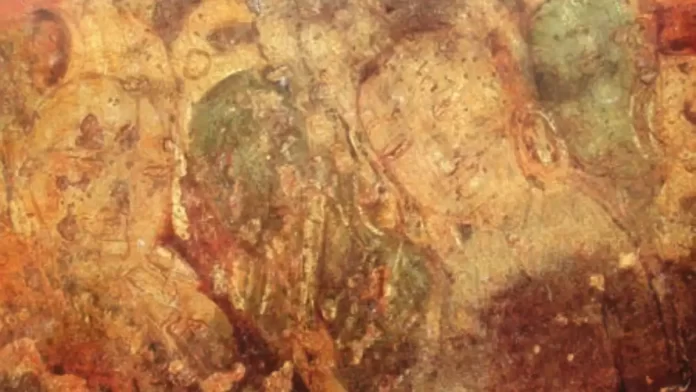Badami is located in the Karnataka state of India. It is famous for its mural cave paintings patronized by Chalukyan rulers in the 6th century AD.
One should note that Badami was the historic capital of Chalukyas who succeeded the Vakataka dynasty in the 6th century AD.
As Chalukyas were heavily inclined toward Brahmanism, most of the Badami cave paintings are based on Vaishnav mythologies. In terms of features and styles, cave paintings at Badami draw heavily from the Ajanta and Ellora paintings in Maharashtra.
Chalukyan rulers were great patrons of Brahmanical art and culture. Chalukyan King Manglesha who happened to be the younger son of the great Pulakeshin II patronized the cave paintings at Badami.
Main features of Badami Cave Paintings
Given below are some distinguishing features of Badami cave paintings-
Dance Scenes
Cave no 4 at Badami depicts a palace scene where Kirtivarman is shown to be watching dance along with his wife and courtiers.
Indra and Vishnu
As Chalukyan kings were affiliated with the Vaishnav sect of Brahmanism, most paintings are related to Vaishnavism. For instance, cave no 4 depicts a painting of Vishnu, and a corner panel of the same cave shows Indra and his retinue.
Extension of Ajanta Paintings
Badami cave paintings bore a striking similarity to Ajata cave arts. Technically speaking, they represent an extension of the tradition of mural painting from Ajanta to Badami in South India.
Their clean caricaturing, fluid forms and compact composition exemplify the proficiency and maturity the artists had achieved in the sixth century AD.
However, compared to Ajanta paintings, Badami cave paintings have undergone more decay with the passage of time.
Large Eye Sockets
Like Ajanta paintings, Badami cave paintings also gracefully drawn faces of the king and the queen remind us of the style of modeling in Ajanta. They depict human figures with large eye sockets.
Half-Closed Eyes
One important feature of Badami cave paintings is that human and divine figures have been depicted with their eyes half-closed. Besides aesthetic reasons, this was probably done to portray high-class gracefulness and divinity.
Protruding Lips
In Badami cave paintings, human and divine figurines have their lips protruding. Interestingly, the contours of different parts of the face create protruding structures of the face itself. Thus, with simple line treatment artists could create volume.
